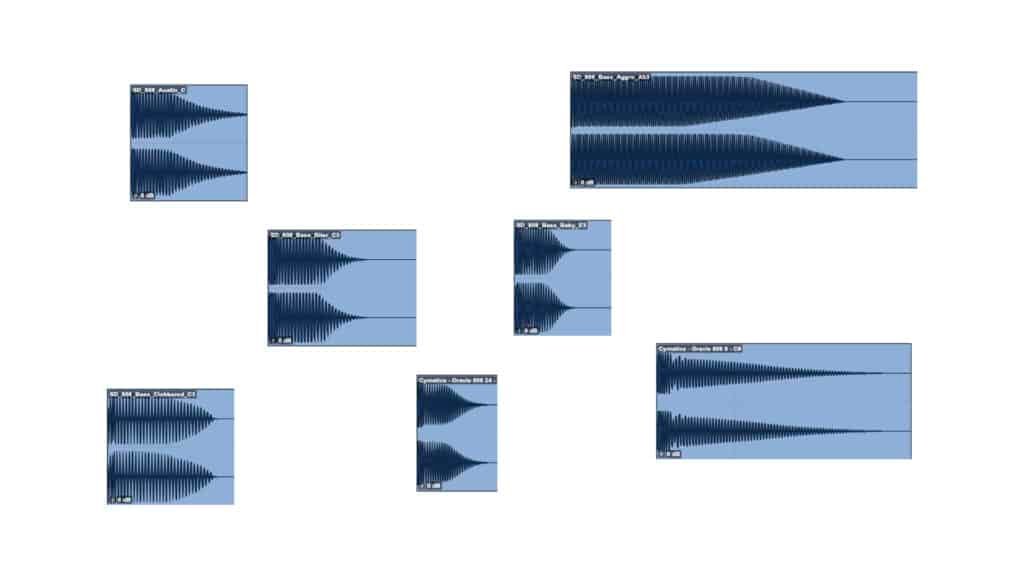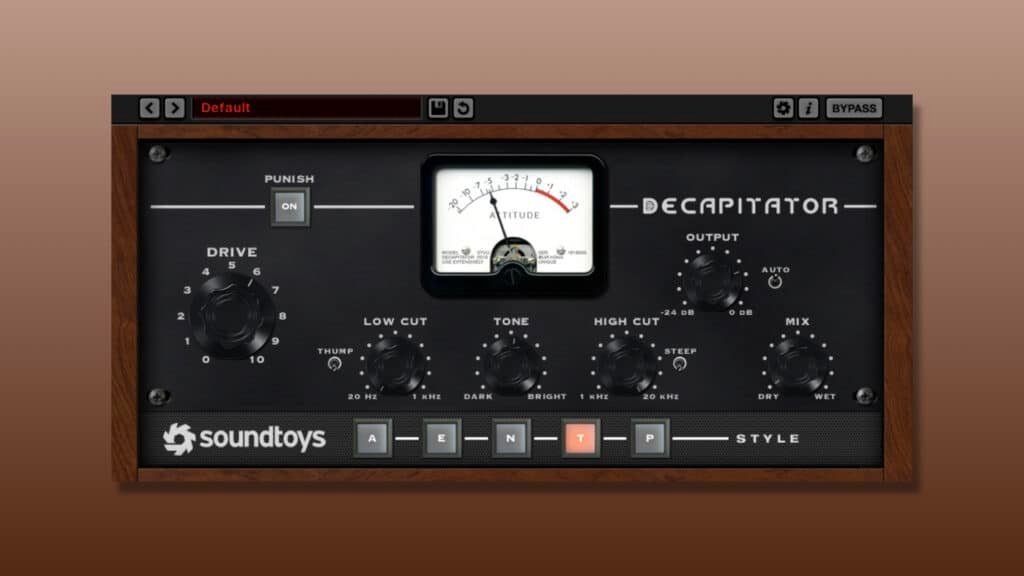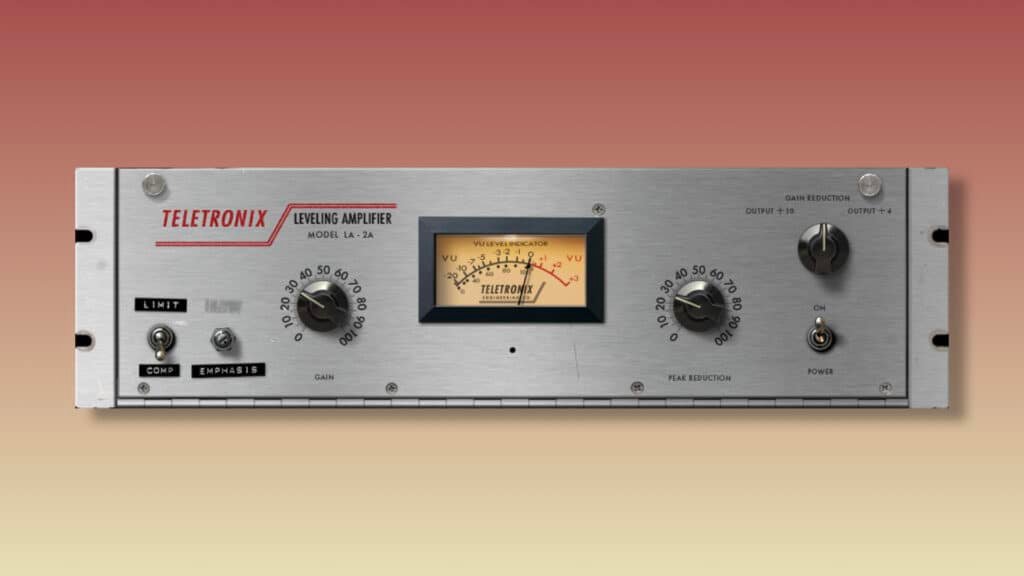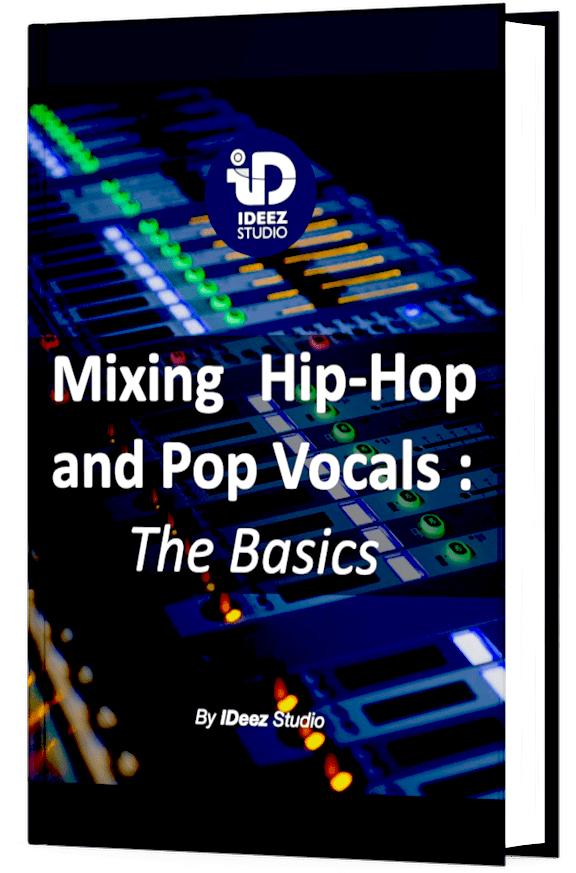Very often in music, and especially in rap music, 808s add a lot of punch to the instrumental. But how to give your 808 more punch in the mix ? I give you all the best techniques in this article!

The 5 steps to give your 808 more punch are:
- Choose the right sample
- Add saturation
- Use a compressor
- Use an EQ
- Clean up conflicting sources
Mixing and producing hip-hop and pop projects on a daily basis as a mixing engineer, I can assure you that applying these 5 steps on all your 808s will drastically change how they sound in the mix.
It will sound punchier, more powerful and it will always blend much better in the mix.
Keep in mind though that it’s not always necessary to add extra processing to your 808 if it already sounds good. Sometimes no processing is necessary at all! Think about it!
If you want to enjoy the same content through a video, you can click on the link right below!
1. Choose the right sample
This first point is one that many producers miss. However, it is more than essential! You can be the best producer or mixing engineer in the world, a bad sample will remain a bad sample, even if the rest of the mix is correct.
In fact, talking about “bad” sample doesn’t really make sense, we’ll rather talk about sample that doesn’t fit the song or the general vibe. If you miss this point, everything else will be useless.
But how do you choose the right sample for the rest of the instrumental? It always depends on the song and on elements external to the 808 itself, but some generalities can help you.
A. Sustain
The first thing to focus on is the sustain time. As a general rule, shorter sustain times will be more suitable for fast tempo and longer sustain times for slower tempo.
But it also depends a lot on the average time between each hit of 808 and what you want to focus on as breathing time within the instrumental.
B. Color / Character
Some tools (that we will see below) will help you to shape the sound of your 808 and to get a very precise character and color depending on what you need. But why not start directly with a sound that is already close to what you want to achieve?
Thinking this way will save you a lot of time and allow you to work much more efficiently than normal. Generally, there are two main types of 808s (some of them are in between these two extremes, of course):
- The harmonically rich 808, which has a lot of energy in the middle and top of the spectrum.
- The 808 “poor” in harmonic, with a large part of the energy between 35 Hz and 150 Hz
Even if the term “poor” sounds very pejorative, it does not mean that the harmonically rich 808 will always be better. Again, it will always depend on what is needed in the mix.
C. Attack
And last but not least: the attack. It is not necessarily the time of the attack that should be focused on, but rather the energy of the attack. Are you looking for something hard hitting or something softer?
You can of course use a transient shaper afterwards to adjust the level of the attack, but again, I really advise you to sculpt your instrumental and/or your mix from the sample selection stage.


2. Add saturation
Now that you’ve found the right 808 sample (or designed it with the right tool), it’s time to add what can be considered a basic element to add more punch to the 808.
Adding saturation to the 808 will do several things:
- First of all a harmonic richness put forward and thus an 808 that blends more easily in the mix
- An attack and a decay enhanced by the addition of saturation (and thus more punch)
- And finally, a slight compression (or heavier depending on the amount of saturation) will be felt, which will create an extra energy and power.
But how do you go about getting the best results? Are there things to avoid? I’ll explain it all in detail right below. Depending on the plugin you use, these steps might be slightly different. But each step should work with all the classic saturation plugins on the market.
ℹ️ You want to know what the best saturation plugins are for 808s? Then take a look here first: Top 6 Saturation Plugins For 808s
A. Adjust the drive knob
The first thing to do is to adjust the “amount” of saturation you want to add to your 808. This will determine the character of the 808 for the rest of the process. But how do you know how far to go?
Well, you have to be able to feel it in relation to your needs and especially to what the song needs. But I would say as a rule of thumb, go to the point where the addition of saturation is clearly audible but the bottom end is noticeable.
Some plugins like Decapitator or Neutron tend to inhibit the bass when the saturation is too strong, so this should be avoided. It is imperative to keep the energy in the low end of the spectrum or risk losing all the roundness and warmth in the mix.
B. Adjust the Color and Character
Most of the saturation plugins on the market allow you to adapt the tone of the processed source quite easily.
It will often be either a knob that will focus on the highs or on the lows. Or, for some, a small EQ that will allow to act more precisely on the frequency spectrum.
In both cases, you have to ask yourself the right questions and know why you want to add saturation to your 808.
- If it is to give it more character and harmonic richness, it will be towards the highs that you will have to turn.
- If you want to give it more punch and power, you’ll have to go for the low end.
C. Play With The Special Knobs
The more advanced saturation plugins have advanced settings that can really upgrade the accuracy of your saturation and thus your 808. These settings always depend on the tool in question and differ from plugin to plugin.
Whatever the plugin in question, I have only one advice for you: play with these settings and try! It’s the best way to get the best results and especially to know your plugin more deeply.
Sometimes you can get very surprising results just by trying different combinations with the parameters that are available to you.
D. Adjust the mix knob
The last step will be to adjust the balance between the direct signal and the processed (saturated) signal. Sometimes the mix will remain at 100%, but this is quite rare.
When you adjust this knob mix, take off the solo mode! It is essential to listen to the sound result in context to make the best decisions.

3. Use a compressor
The primary purpose of a compressor is to decrease the dynamics of a processed audio signal. But what it is generally used for is quite different: to give character. This is what we can look for when compressing an 808.
But how to use it and which parameters to choose? In general (even if there are exceptions), a slow attack and a fast release are to be preferred. The threshold should not be set too low, but low enough to handle the attack and some of the decay. The ratio should not be too high to avoid over-compressing the 808 unnecessarily.
Generally, we will end up with this kind of values:
- Attack: From 50ms to 100ms
- Release: From 20ms to 30ms
- Ratio: From 2:1 to 3:1
- Threshold: Always depends on the input gain of the 808.
In my opinion, there are two plugins that outperform the others for 808 compression:
1. Waves MV2

MV2 is a very instinctive Waves plugin that uses downward and upward compression within the same compression tool. But what does that mean exactly?
It means that you can, at the same time, apply a “classic” compression by working on the louder levels, but also a compression that would increase the lower levels, called “downward” compression.
This allows you to obtain a much more robust audio result which works particularly well with the 808.
2. UAD LA-2A

UAD La-2A is an emulation of the legendary Teletronix LA-2A optical compressor. The plugin is very close to the original hardware unit and is super versatile.
Besides being quite easy to use, it is very suitable for 808 compression. Secondly, compared to other compressors, it has the advantage of adding a little distortion to the source, which is something we were looking for with the 808.
These two compressors are obviously the only tools suitable for 808 compression. Any compressor that has the “classic” parameters of attack, delay, ratio and threshold are good to go!

4. Use an EQ
Choosing the right sample, using the right distortion and compressing the 808 in the right way are not always enough to get an ideal result in the mix.
It is sometimes necessary to add an EQ to clean up certain frequency zones or, on the contrary, to boost others. But what would be the typical case?
A. Cut
Most 808 samples (even the best ones) often have a slight excess in the frequency range between 100 Hz and 150 Hz. This slight excess can quickly prevent the kick from delivering its full power.
So sometimes you have to cut this frequency area to give the body of the kick a little more room and split the frequency spectrum of each element in the mix.
More rare but just as disturbing (especially in mastering): the background noise in the high end of the spectrum. If you hear a little background noise in the sample itself, don’t hesitate to put a Low-Pass Filter around 7kHz to 8kHz to filter it out slightly.
This will never damage the 808 (even with a lot of distortion and high harmonics).
B. Boost
If you used distortion at the beginning of your processing chain, boosting the frequency range between 3 kHz and 5 kHz can be very useful to introduce the 808 even more easily into the mix.
This will bring out the color of the distortion a bit more without changing the balance between direct and distorted signal.

5. Clean up conflicting sources
Many frequency conflicts can occur in a mix, and this is normal. But in the low end of the spectrum, this is to be avoided at all costs. But why is it so “dangerous” in the low end range?
The answer is simple: phasing. In the high end of the frequency spectrum the wavelengths are very small and the chances of producing phase clashes between sources are very low. Except in special cases, the rare phase oppositions that appear in the high end of the spectrum are inaudible.
But in the low-end, it is completely different: the wavelengths are longer and therefore more likely to conflict with other audio signals. Let’s not forget that a phase clash produces a cancellation of the sound wave!
That’s why, with the 808, you have to be very careful with the phase of the different sources that could operate in the low end of the spectrum. Because an opposition can completely destroy a good mix.
Typical sources that the 808 can clash with are kick drums, bass (if played at the same time) and pad synths.
In case of phase opposition, you should either:
- Cut the bass/sub range
- Use a phase reversing switch
- Or move the waveform to put it in phase with the 808 (or vice versa)
Need a professional sound engineer specializing in pop and hip-hop mixing ? Great! Take a look at our services and let’s blow up your career together!
Let’s start now!
Conclusion
Choosing the right sample, using saturation, compressor, EQ and cleaning up conflicting sources can give a lot of punch to an 808. But I would like to add something else: sometimes none of these steps will be necessary.
With this article, I just want to give you a process to follow that works every time in case your 808 doesn’t fit in your mix.
If you have any question about how to give more punch to your 808s or simply about music mixing, please contact me, I’m always very happy to help!
Related Articles:
My favorite tools for mixing pop and hip-hop music:
Plugins
In the field of auto-tune, I’m convinced that nothing’s better and more efficient than Antares Auto-Tune Pro. As for the EQ’s, FabFilter Pro-Q3 and Slate Digital Infinity EQ are, in my opinion, the best tools. For compression, I have 2 favorites plugins: Waves RComp and UAD EL8 Distressor.
As for reverb, I’m a big fan of the Soundtoys Little Plate, but generally, I go for the Valhalla VintageVerb for its versatility. I also love the Arturia Rev PLATE-140 and the UAD Pure Plate for its organic side.
Headphones
The closed headphones I love and will always love using for mixing pop and hip-hop music are the Beyerdynamic DT-770. As for the best open-back headphones, I use the Sennheiser HD600 headphones, and I’m really happy of them!
Monitors
Having a pair of Yamaha HS7 in its studio or home studio is always cool for more excitement while listening to your mixes. The Adam Audio T7V monitors are also super accurate. In my studio, I also have a pair of Genelec 8030 for their reliability.
Hardware gear
For anyone who wants to start using hardware in their mixes, I always recommend these 2 units from Klark Teknik: the EQP-KT and the 76-KT. Don’t forget to use good converters, such as the Apollo interfaces. This is essential for a good rendering.






